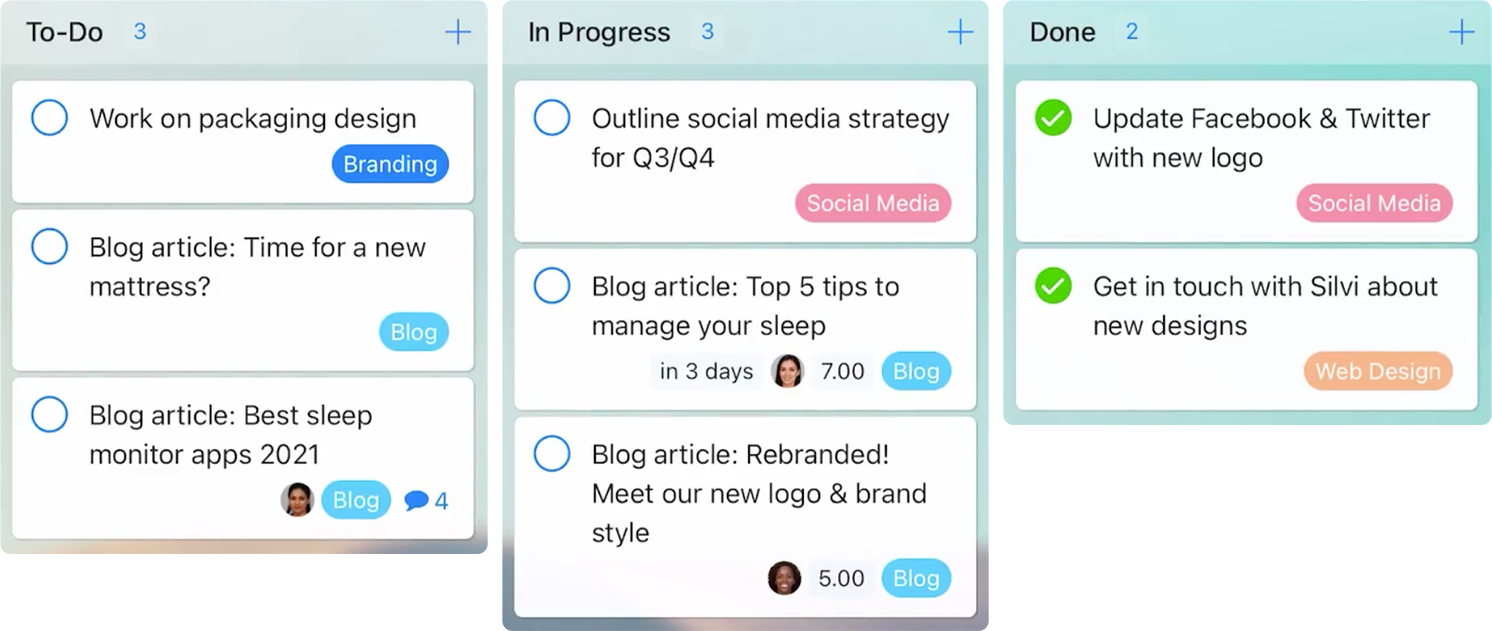
Cross-team collaboration has become an assumed practise in many businesses, but, just because you group a bunch of people together, it doesn’t mean things will go swimmingly. Here’s how to ensure your team doesn’t drown.

Cross-team collaboration is a method that many businesses are embracing (or starting to). It is essentially a group of people from different areas of expertise working together to achieve a common goal. This can include individuals from different departments, levels of an organization, and different offices. The main idea is that the assembly of different skills and knowledge will cultivate innovative solutions.
Why Is Cross-Team Collaboration a Thing?
With a competitive market and new technology constantly emerging, cross-team collaboration has become an essential requirement for any business wanting to stay on top of the game. It has now become commonplace for companies to implement a cross-functional collaboration strategy as it can not only boost specific areas of the business but also enhance a cohesive working culture. Other things it can be responsible for are:
Gaining Insight
When you put together a group of people who are experts in different subjects and have different skill sets, new perspectives will be gained. Not only will new insight help your team come up with creative solutions, but taking on board a different perspective can provide you with an additional outlook on how you conduct your work. Seeing something through different eyes gives you a fresh approach and enhances the development.
Spurring Innovation
With new insight, comes innovation. Innovation is what separates successful businesses from their competition. Cross-team collaboration is a great way to foster creative minds by using creative tools to pool ideas together — ideas that may not have otherwise come to fruition if these minds weren’t brought together.
Nurturing Staff Development
It’s easy to feel stuck in a routine when you go to the same office every day, interact with the same people, and know the work like the back of your hand— we’ve all been there. Being part of a cross-functional team will challenge staff members. It allows them to exercise their skills in a different environment, and will also create new experiences, and different lessons to be learnt.

Promoting Diversity
Diversity, of any kind, is a positive element of teamwork. With an assortment of different professional experiences and skill sets on hand, it can provide the necessary tools and paths to tackle the problem in an inventive way.
Eliminating Tribalism
Tribalism within the workplace can be damaging to companies, and kill off any chance of a cross-functional collaboration strategy. Cross-team collaboration breaks down these department silos, and encourages employees to interact with colleagues they wouldn’t otherwise associate with. A major plus for improving collaboration between departments.
What Are the Challenges of Cross-Team Collaboration?
Gathering a bunch of people from different teams and expecting all the great skills to work together seamlessly is great in theory, but in reality, it may not go according to plan. Remember, you have people with different backgrounds who are accustomed to their own working habits and set objectives. Various needs, priorities, and even egos will need catering to. Breaking down silos is just one of the challenges of cross-team collaboration.

Simplify your project communication and task management with our user-friendly project management software.
Sign up for free today!
The Silo Effect refers to the division of labour and organizing of a company based on specialization. A very common structure in many companies, it seems only logical to separate workers based on their fields of expertise. It makes individual and department objectives and responsibilities clear, which increases that level of efficiency. The danger of this, however, is that it restricts the influx of information, which can in turn create a sort of tunnel vision. This puts innovation and any chance of company-wide collaboration at risk.
But challenges shmallenges, remember, there are always ways to overcome them!

6 Ways to Boost Cross-Team Collaboration
There will definitely be barriers that hinder cross-team collaboration, but for every drawback, there will be a solution! Here are some tips that may help:
Establish structure at the very beginning
With different egos, needs, and working habits running rampant, creating a team dynamic — with the hierarchy defined and the objectives set — needs to happen before anything else. If there is more than one person in the team at a managerial level, then it has to be decided who is in charge. Only one person can lead the team as it prevents confusion — people know who to report to, and it’s made clear who is accountable. Ensure everyone knows what their individual tasks are, as well as the group’s main goal.
Connect your team members
Trust is the foundation for the success of any team collaboration, and the best way it can be built is through team members getting to know one another, as well as through face-to-face interaction. Body language, eye contact, and facial expressions provide another level of understanding that goes beyond a person’s skill set. When your team are first getting to each other, ensure it’s a face-to-face meeting. It can also be further encouraged in various ways, from continuing meetings in person instead of via email or phone conferences, or dedicating some time to explore team-building exercises.
Encourage peer recognition
When someone does well or goes that extra mile, it’s always nice to be recognized. Include a reward system in your cross-functional collaboration strategy because recognizing the efforts of your members will make them feel valued, and will strengthen their commitment to the team. Allowing the team to reward the recipients is a method that can also build more trust, and encourage collaboration.

Involve managers
A cross-team collaboration venture can’t happen without the support of the heads of departments. Many managers or team leaders may be reluctant to let some of their staff take on board extra work, as they fear their primary responsibilities will falter. Including them in the initial process, like enabling them to choose which staff members get to participate, can help ease their uncertainties, and will highlight how beneficial getting involved can be for their staff.
Centralize technology
Consolidating resources, information, and interaction into one system will make cross-team collaboration all the more simple. Using project management software like Zenkit, which has tools such as calendars to schedule meetings, and chat apps for communication streamlines the project process.
Don’t be afraid to experiment
Cross-functional teams come in all sorts of shapes and sizes, which means there will be all sorts of methods that will help boost collaboration. So, when it comes to finding the perfect formula for your team, remember it’s all about trial and error. Tap into the pool of creative minds, give the listed tips a go, and you’ll be sure to find a way that will make your team cause a splash.
Cheers,
Dinnie & the Zenkit Team





Leave a Reply